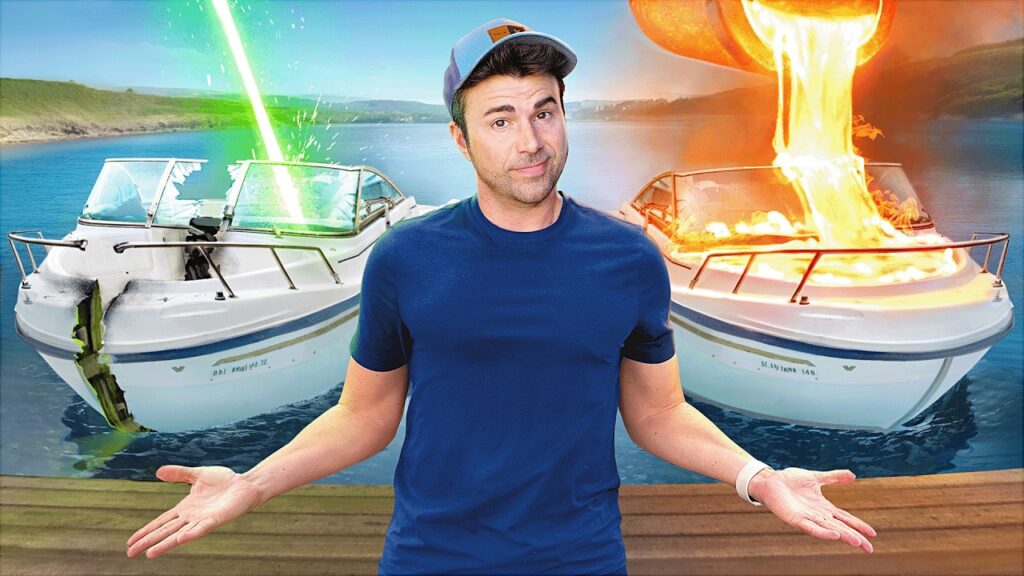Mark Rober, the former NASA engineer and YouTube sensation, captivated Indian students at the WAVES Summit 2025 with his blend of science, humor, and innovation. Known for his viral projects and educational videos, Rober’s talks provided more than just entertainment—they offered valuable life lessons and insights into the world of STEM (Science, Technology, Engineering, and Mathematics). Here’s what Indian students learned from Mark Rober’s public talks and how his presence at the summit impacted their perspective on learning, creativity, and problem-solving.
1. The Power of Curiosity and Asking Questions
One of the key takeaways from Mark Rober’s talks was the importance of curiosity. Rober emphasized that the foundation of any breakthrough or innovation starts with asking questions. As a student, it’s easy to get caught up in the routine of exams and assignments, often focusing more on the “how” and less on the “why.” However, Rober encouraged students to never stop being curious, to ask deeper questions, and to seek understanding beyond the surface level. According to him, every great invention begins with a question, and it’s the pursuit of answers that fuels progress.
He shared anecdotes from his career, particularly his work on NASA’s Mars Curiosity Rover, illustrating how simple yet profound questions led to some of the most significant scientific advancements. Rober’s message was clear: being curious is a fundamental quality that drives innovation.
2. Failure Is an Integral Part of Success
Rober didn’t sugarcoat his journey. He openly talked about failures, mishaps, and obstacles he encountered along the way. For many students, the fear of failure can be daunting, often hindering them from pursuing their true potential. Mark Rober turned this idea on its head by explaining how failures are often stepping stones toward success.
He recalled instances from his NASA days where things didn’t go as planned—whether it was a project not meeting expectations or a technical error causing delays. However, Rober emphasized that each failure was a learning opportunity, a chance to analyze what went wrong and make improvements. This approach resonated deeply with students, teaching them to view setbacks not as dead ends, but as valuable learning experiences that ultimately shape their growth.
3. Engineering Is Everywhere
Rober’s talk underscored the idea that engineering isn’t just for those pursuing a degree in the field—it’s for everyone. He brought examples from his everyday life, such as his famous glitter bomb prank, to demonstrate how basic engineering principles can be applied to everyday objects. Whether it was designing a larger-than-life Nerf gun or creating a giant Newton’s cradle, Rober showed students that engineering isn’t confined to laboratories; it’s a part of our daily lives. From smartphones to home appliances, understanding how things work and applying engineering concepts can lead to better design, smarter solutions, and more efficient systems.
For many students, this perspective was eye-opening. Rober’s talk illustrated how students, regardless of their future careers, could benefit from applying engineering principles to their hobbies, passions, or day-to-day challenges.
4. Creativity in STEM
Perhaps one of the most impactful lessons Rober imparted was the importance of creativity within STEM fields. Often, students perceive STEM as a rigid and technical domain, but Rober shattered this notion by showcasing how creativity plays a central role in scientific and technological advances. His most well-known projects—like the glitter bomb or the world’s largest Nerf gun—combined science with fun, engaging audiences while offering educational value.
Rober explained how creative thinking helps solve complex problems. For example, his work on the Mars Curiosity Rover involved developing new methods of testing equipment to ensure that the rover could survive the harsh conditions on Mars. The ability to think outside the box and approach problems from a creative angle was one of the key messages Rober shared with the students. His example inspired them to see the creative potential in fields traditionally viewed as technical.
5. STEM Can Be Fun and Accessible
One of the major takeaways from Mark Rober’s public talks was how fun STEM can be. Rober’s engaging personality, witty humor, and hands-on demonstrations made the topics of science and engineering accessible to students of all ages. Whether it was his live demonstration of the world’s largest Newton’s cradle or the high-energy Nerf gun display, Rober used visual spectacles to engage students and show them that science is not just for textbooks—it’s a lively, dynamic field full of exciting possibilities.
For many students who may have once viewed STEM subjects as difficult or intimidating, Rober made these topics feel approachable. His presentations highlighted the joy of learning, the thrill of discovering new things, and the excitement of turning wild ideas into reality.
6. Collaboration Is Key to Innovation
In addition to individual effort, Rober emphasized the importance of collaboration. He shared how his most successful projects—whether at NASA or on YouTube—were the result of teamwork. From collaborating with his CrunchLabs team to working alongside other engineers at NASA, Rober demonstrated that innovation often thrives when diverse minds come together to solve problems. He encouraged students to work with others, learn from their peers, and use collaboration as a tool to expand their horizons.
This lesson resonated particularly with students interested in entrepreneurship or those who are looking to make a difference in the world. Rober’s collaborative approach is a reminder that innovation is rarely a solo endeavor.
7. The Importance of Persistence
Lastly, Mark Rober highlighted the role of persistence in achieving success. He shared stories of how he never gave up on his dreams, even when faced with major obstacles. His journey wasn’t always smooth, but it was his perseverance that eventually led him to success. Rober’s message was powerful: don’t give up on your ideas, even when things get tough. The road to innovation and success is rarely linear, and persistence is what will carry you through the challenges.

